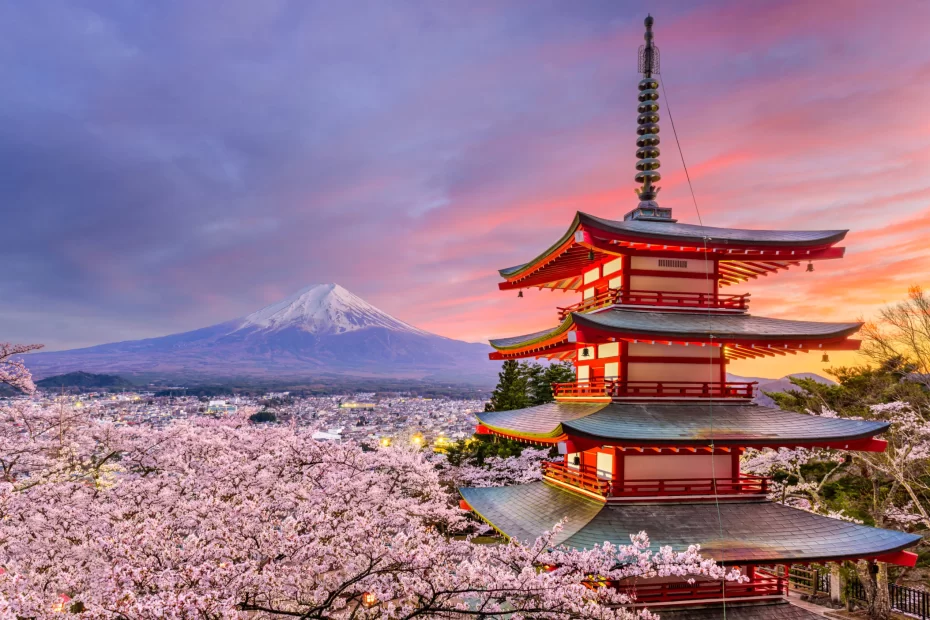Japan is a beautiful place. It’s the ideal juxtaposition of extremely old customs covered with lightning speed, state of the art innovation. Some first-time guests to Japan are frequently shocked to discover that, as one of the world’s most developed industrialized countries, this generally little Asian nation likewise flaunts a rich and entrancing history that goes back millennia.
For sure, some time before a large number of Europe’s most staggering churches were constructed, Japan’s Shinto and Buddhist sanctuaries were at that point deeply grounded and attracting travelers and supporters to their intricate plans and stylistic theme. Simultaneously, the nation was at that point idealizing the abilities and exchanges that would show it the way to wealth, from fine porcelains and ceramics to materials like silk.
A lot of this rich custom has, regardless of wars and regular demolition, been safeguarded (or modified), and a visit to Japan is a critical experience. Bragging a perpetual rundown top attractions, fun activities, and focal points to investigate, a get-away in Japan is surely an extraordinary venture of time and cash.
Find the most ideal getaway spots in the country with our rundown of the top vacation destinations in Japan.
- Mount Fuji: Unquestionably Japan’s most unmistakable milestone, grand Mount Fuji (Fuji-san) is likewise the country’s most elevated mountain top. Transcending 3,776 meters over a generally to a great extent level scene toward the south and east, this magnificent and legendary mountain is sufficiently tall to be seen from Tokyo, in excess of 100 kilometers away.
Mount Fuji has for quite a long time been commended in craftsmanship and writing and is presently viewed as so significant a symbol that UNESCO perceived its reality social importance in 2013. Part of the Fuji-Hakone-Izu Public Park, Mount Fuji is move by in excess of 1,000,000 individuals each mid year as a demonstration of journey, which finishes in watching the dawn from its culmination.
While some actually decide to start their move from the base, most of climbers currently start from over the midway imprint, at the fifth Station, bringing about a more reasonable six-or thereabouts hour rising. The people who truly do endeavor the total trip are encouraged to leave in the early evening, separating the move with a short-term stop at one of the “Mountain Cottages” intended for this very reason. A solid beginning the following day gets you to the top for the dawn.
- Supreme Tokyo: Tokyo’s most well known milestone, the Magnificent Royal residence with its lovely seventeenth century parks encompassed by walls and canals, is an unquestionable requirement while visiting the country’s capital. Try not to be put off by the way that most of the royal residence is shut to general society (it’s still being used by the Supreme family), as there is sufficiently still to see essentially by walking the grounds.
Notwithstanding the many fine perspectives on the castle from various places in the encompassing parkland, guests are allowed into the East Higashi-Gyoen Nursery and different regions that are opened to the general population as a component of a coordinated visit. One of the most heartfelt perspectives is of the popular Nijubashi Extension, or “twofold scaffold,” so named for its watery reflection.
Another of the must-sees for sightseers visiting Tokyo is the renowned Ginza shopping area. This continuously clamoring region is home to the Kabuki-za Theater with its Kabuki exhibitions, as well as the Shimbashi Enbujo Theater with its conventional Azuma-odori moves and Bunraku exhibitions.
- Hiroshima Harmony Commemoration Park: While little should be expressed here of the detestations of the nuclear bombarding of Hiroshima in August 1945, much can be said to describe the extraordinary endeavors this lively city has made to remember the numerous survivors of the world’s most memorable atomic assault. Maybe significantly more critically, Hiroshima has turned into an image of enduring harmony.
Visited by in excess of 1,000,000 individuals every year, numerous from abroad, Hiroshima Harmony Commemoration Park (Hiroshima Heiwa Kinen Kōen) lies at the focal point of the nuclear impact in the thing was once a clamoring area of the city. Here you’ll track down various significant landmarks, remembrances, and galleries connecting with the occasions of that portentous day.
Notwithstanding the grounds and gardens with their bright cherry blooms, the recreation area is where you’ll discover a sense of harmony Remembrance Gallery, with its various shows managing the issue of world harmony. It’s likewise where you’ll track down the Commemoration Cenotaph and the Fire of Harmony, as well as the Nuclear bomb Arch, the remnants of an authoritative structure that lay at the focal point of the blast.
- Memorable Kyoto: Quite possibly of Japan’s most visited city, wonderful Kyoto — one of a handful of the urban communities in the country to be saved the decimation of WWII — draws in excess of 10 million guests yearly. The greater part of them are here to investigate Kyoto’s fine old roads and design, a lot of it unaltered since the Supreme family took up home here over a long time back.
That being said, the city was Japan’s generally significant social community. This heritage, as a matter of fact, proceeds right up to the present day with its numerous exhibition halls and craftsmanship displays, each overflowing with significant figures, works of art, and other fine arts.
Features of Kyoto’s Buddhist-impacted engineering incorporate its some all around saved sanctuaries, 30 of which are still being used, and significant designs like the fourteenth century Brilliant Structure (Kinkaku-ji), well known for its wonderful gold-leaf-clad outside.
Make certain to likewise visit Nijo Palace, a seventeenth century fortification that has held its unique walls, pinnacles, and channel. Likewise worth seeing are the palace’s delightful doors, alongside its castle with fine inside style.
One more milestone to visit is the first Kyoto Royal Castle (Kyoto-gosho). Inherent Promotion 794, it’s one of the city’s most visited noteworthy locales.
At long last, no visit to Kyoto is finished without investing energy investigating the Arashiyama Bamboo Forest. This wonderful area of tall bamboo is only a couple of moments’ stroll from the town place.
- The Island Place of worship of Itsukushima, Miyajima: Simply a short ship ride from central area Hiroshima is the island of Miyajima, well known the world over as Japan’s Hallowed place Island. Covering an area of 30 square kilometers in Hiroshima Sound, Miyajima is most popular as the home of the Itsukushima Hallowed place, a Shinto sanctuary devoted to the Princess girls of the breeze god Susanoo.
Dating from the eighth 100 years, most of the hallowed place’s structures emerge from the waters of a little inlet upheld simply by heaps. The impact at elevated tide is absolutely shocking, making these designs – including the renowned Extraordinary Drifting Entryway (O-Torii) – show up as though they’re drifting on water.
Connected together by walkways and scaffolds, it’s a captivating spot to investigate, specifically its bigger corridors. These incorporate the impeccable Honden (Fundamental Corridor), the Contributions Lobby (Heiden), the Request Lobby (Haiden), and the Lobby of 1,000 Mats (Senjokaku).
Another striking element is the holy place’s stage, where guests are engaged with customary moves and melodic exhibitions. Likewise worth investigating are the island’s dazzling grounds and gardens, home to wild deer and various bird settlements.
- Sanctuary City: Noteworthy Nara: For quite a long time the center of Japanese culture, the exquisite pristine city of Nara is home to countless notable structures, alongside significant irreplaceable assets and show-stoppers.
Notwithstanding its numerous memorable roads, the city flaunts various significant old sanctuaries. These includ the sublime seventh-century Kofuku-ji Sanctuary, maybe the most popular of the Seven Extraordinary Sanctuaries of Nara; and the amazing eighth-century Todai-ji (Incredible East Sanctuary), well known for its enormous bronze sculpture of the Incomparable Buddha (Daibutsu), cast here in Promotion 749.
Additionally of interest in Todai-ji are its Extraordinary South Door (Nandaimon). This terrific two-story structure is borne on 18 segments, with two Nio sculptures standing eight meters tall, and it watches the sanctuary entrance. Likewise significant here is the Lobby of the Incomparable Buddha, the world’s biggest lumber building.
- Osaka Palace: Implicit 1586 by popular Japanese hero and government official Toyotomi Hideyoshi, Osaka Palace (Ōsaka-jō) was at the time the biggest and most significant fort in the country. Albeit obliterated and revamped various times since, the current construction, worked in 1931, stays consistent with the first.
Features of a visit incorporate the gigantic five-story, 42-meter-tall primary pinnacle. Based on an impressive 14-meter-tall stone base, the pinnacle is home to various presentations specifying the historical backdrop of the palace and the city. Make certain to visit the highest level for its magnificent perspectives over Osaka, a particularly appealing sight as the sun sets.
Likewise of interest in Osaka Palace Park is the Hokoku Sanctuary, while Osaka’s most popular sanctuary, Shitennō-ji, is additionally worth visiting and traces all the way back to Promotion 59. Prominent as Japan’s most memorable Buddhist sanctuary, this wonderful sanctum includes a five-story pagoda alongside various other impeccably embellished structures. Among them are the Brilliant Structure (Kondō), with its fine sculptures and compositions; the Auditorium (Kōdō); and a beautiful covered passageway connecting three of the site’s doors.

